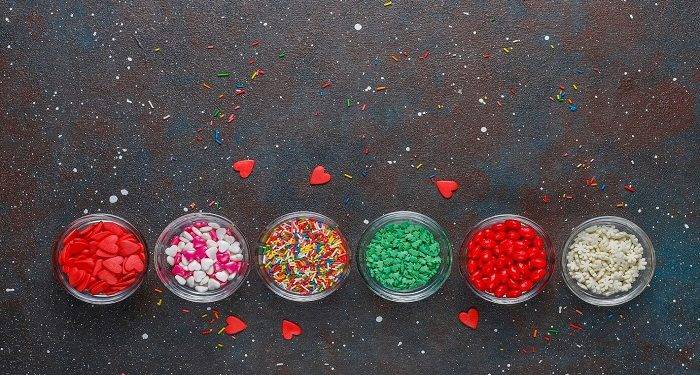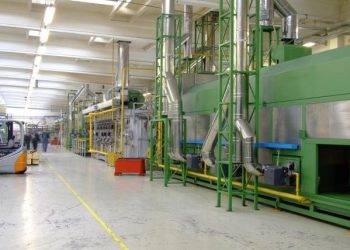The Sweet Science of Sprinkles: How They Elevate Your Baking
The History of Sprinkles: From Simple Sugar to Artisan Creations
Sprinkles have come a long way since their humble beginnings as simple sugar decorations. The term “sprinkle” is believed to have originated in the mid-19th century when bakers would sprinkle sugar crystals over cakes and desserts to add a touch of sweetness and color. The most traditional form was used primarily for festive occasions, adorning holiday treats and celebratory cakes. As the culinary world evolved, so did the sprinkle—transitioning from basic sugar granules to a dazzling array of shapes and colors, including quins, jimmies, and nonpareils. Today, artisan bakers have begun to create bespoke sprinkles using unique flavorings, natural colorings and even incorporating health-conscious ingredients like chia seeds and flax for a trendy, nutritious twist.
The Chemistry Behind Color: How Sprinkles Can Change the Flavor Profile
Color in sprinkles is not merely decorative; it plays a critical role in influencing flavor perception. The sight of sparkle and brightness can psychologically prepare taste buds for sweetness even before the first bite. A sprinkle with vibrant colors often gives the impression of a more flavorful treat. Additionally, many manufacturers now use natural food dyes derived from fruits, vegetables, and spices, creating a link between color and taste that elevates the entire sensory experience. For instance, sprinkles colored with beet juice impart a subtle earthiness, while those infused with matcha bring a hint of umami. This intricate balance between aesthetics and taste adds an exciting dimension to both classic and creative baking.
Aesthetics and Appeal: The Art of Decorating with Sprinkles
Decorating with sprinkles is art; it requires a discerning eye for balance and harmony. A well-decorated cake can serve as the centerpiece of any gathering, transforming an ordinary dessert into a captivating masterpiece. Sprinkles can be layered, arranged in patterns, or used to create contrasting textures on desserts. The techniques can mirror various styles, from intricate designs inspired by haute patisserie to playful applications reminiscent of childhood birthday parties. Moreover, the choice of sprinkles can evoke nostalgia, drawing on the rich traditions of baking passed down through generations. By understanding the art of decoration and integrating sprinkles thoughtfully, bakers can create visually stunning desserts that delight the eyes as much as the palate.
Choosing Quality Over Quantity: A Guide to Bulk Sprinkles
What to Look For: Ingredients and Sourcing Quality Sprinkles
When choosing sprinkles, quality should never be an afterthought. Premium sprinkles are often made with fewer artificial additives and focus on using natural ingredients, which not only contributes to better flavor but also addresses dietary concerns. Look for sprinkles that clearly list their ingredients; avoid those with synthetic colors or preservatives. Sourcing is equally important; consider buying from local suppliers or artisanal brands that emphasize transparency in production. The integrity of sourcing can influence not just quality but also the environmental impact of your baking endeavors. Brands that adopt sustainable practices in both sourcing and production ensure you’re not just buying sprinkles but supporting a positive ethos in food production.
The Variety of Sprinkles: Understanding Different Types and Their Uses
The world of sprinkles is vast, encompassing a multitude of types with distinct characteristics. Jimmies are long, thin, and often have a crunchy texture, making them ideal for classic cupcakes and cakes. Nonpareils, tiny ball-shaped beads, are perfect for adding delicate accents to baked goods, though they may bleed their colors if placed on moist surfaces. Quins boast various shapes including hearts and stars, offering a playful touch to seasonal treats, while sparkling sugar provides a glossy finish that elevates any dessert instantly. Understanding these different variations allows bakers to select the most appropriate sprinkles for their specific recipes, improving both flavor integration and aesthetic appeal. Moreover, varying the size and texture of sprinkles adds depth to the presentation, creating desserts that look as impressive as they taste.
Bulk vs. Retail: Why Buying in Bulk Makes Sense for Serious Bakers
For serious bakers, the benefits of purchasing sprinkles in bulk are manifold. Economically, it typically reduces costs, allowing bakers to experiment with seasonally themed or specialized sprinkles without breaking the bank. Bulk purchasing avoids the frequent trips to the store and ensures that bakers have ample supplies on hand for unexpected baking adventures, emergencies, or when creativity strikes. Moreover, buying in bulk also contributes to reducing packaging waste, an essential consideration in today’s eco-conscious culinary environment. For those who engage in baking as a profession or a passion, establishing a relationship with a reliable bulk supplier can yield a range of options tailored to specific baking needs while fostering creativity.
Mastering Techniques: Getting Creative with Sprinkles
Layering Flavor: Integrating Sprinkles Into Your Baking Strategy
The integration of sprinkles into baked goods is more than a decorative choice; it can enhance flavor complexity. For those seeking to layer flavors, sprinkles can be incorporated directly into the batter of cakes, cookies, and brownies, adding bursts of sweetness and texture. Experimentation with flavor profiles is encouraged; for example, chocolate cookies studded with crunchy toffee bits will elevate the conventional chocolate chip experience, while vanilla cakes with citrus-flavored sprinkles can introduce a refreshing surprise. Furthermore, consider pairing sprinkles with complementary flavors like gingerbread with cinnamon sprinkles or coconut cake with toasted coconut sprinkles. This fusion of flavor and texture allows bakers to reinvent traditional recipes and explore new culinary possibilities.
Beyond the Cupcake: Innovative Uses for Sprinkles in Savory Dishes
While sprinkles are most commonly associated with sweets, their versatility allows them to transcend the dessert category and find a place in savory dishes. Creative chefs have begun incorporating sprinkles into salads, pastas, and even meats, amplifying both presentation and flavor. Consider a charcuterie board topped with herb-infused sprinkles that enhance the visual appeal and complement the flavors of cured meats and cheeses. Similarly, a plate of roasted vegetables can achieve an unexpected flair with a sprinkle of your choice, transforming the ordinary into the extraordinary. The world of savory sprinkles is an exciting, uncharted territory for adventurous bakers and cooks alike, blurring the lines between dessert-centric sprinkles and culinary creativity.
Special Occasion Sprinkles: Tailoring Your Decor for Every Event
Each special occasion demands a unique touch, and sprinkles provide an exceptional means to celebrate life’s milestones. Whether it’s a festive birthday, holiday gathering, or wedding reception, choosing sprinkles that resonate with the theme can emphasize the overall decor and atmosphere. For birthdays, vibrant or thematic sprinkle mixes can accentuate the celebratory tone, while pastel colors can lend an elegant touch for weddings. Seasonal sprinkles, such as Halloween-themed sprinkles with ghosts and pumpkins or Christmas mixes featuring red, green and snowflakes, can serve as festive embellishments that delight guests. By customizing sprinkles for events, bakers can not only enhance their creations but also create a cohesive theme that resonates with the occasion.
Storing and Preserving: Keeping Your Sprinkles Fresh and Flavorful
Optimal Storage Solutions: How to Maximize Shelf Life
The longevity of sprinkles hinges significantly on how they are stored. To maximize shelf life, it’s essential to keep sprinkles in a cool, dry environment, away from direct sunlight which can cause fading and melting. Airtight containers are ideal as they prevent exposure to air and moisture, both of which can degrade quality over time. Glass jars with a sealable lid work particularly well, allowing you to view your colorful collection while also ensuring freshness. Labeling containers with purchase dates can help you track when to use specific sprinkles to maintain peak quality. Invariably, the better the storage conditions, the more delightful your sprinkle collection will remain.
Combatting Moisture: Tips for Preventing Clumping and Staleness
Moisture is the enemy of sprinkles; it not only causes clumping but can also lead to a stale texture that detracts from their appeal. To combat this, consider placing silica gel packets in your storage containers, which can absorb excess moisture. Furthermore, be cautious when accessing your sprinkle stash—frequent opening of containers can introduce humidity, especially in environments with high moisture levels. A swift and careful retrieval process, coupled with optimal storage solutions, will ensure your sprinkles maintain their enchanting taste and texture, ready to spring into action for your baking endeavors.
Springing for Sustainability: Eco-Friendly Practices for Bulk Sprinkles
As sustainability becomes a focal point in the culinary world, bakers are encouraged to consider eco-friendly practices when it comes to sprinkles. Opting for bulk sprinkles not only reduces packaging waste but allows bakers to support brands committed to sustainable sourcing and production methods. Look for companies that prioritize eco-friendly packaging, such as biodegradable or recyclable materials, as this reflects a commitment to reducing environmental impact. Moreover, choosing sprinkles made from organic ingredients can align with clean-eating trends and dietary mindfulness while contributing to sustainable agricultural practices. By implementing these eco-conscious decisions, bakers can enjoy their indulgent creations while also nurturing the planet.









